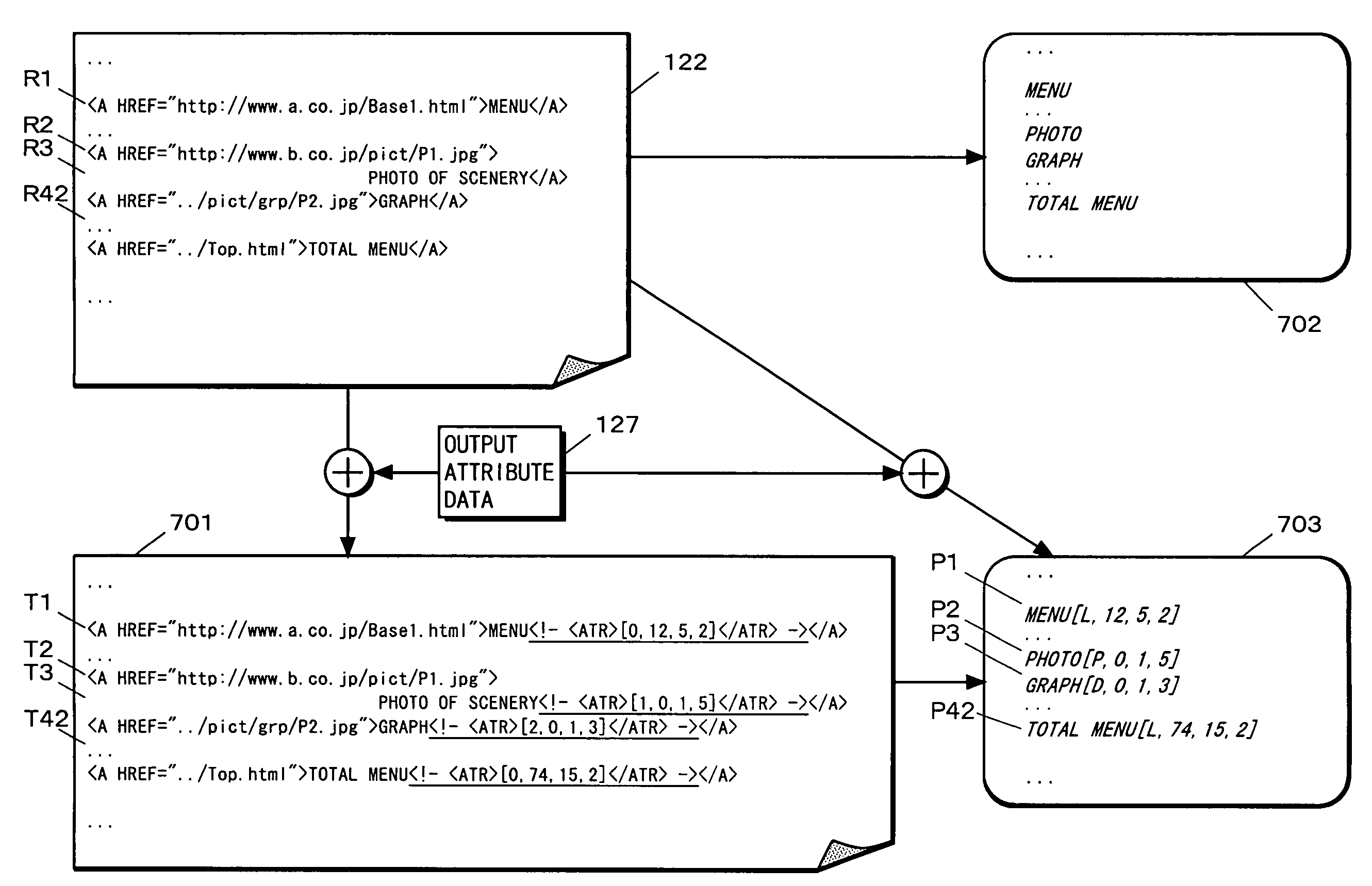Broadcast data receiving device and method for receiving a plurality of multimedia data
a multimedia data and receiving device technology, applied in the field of data distribution system, can solve the problems of difficult for the broadcasting station in the data broadcasting system to satisfy every reference request in real time, the content of the multimedia data in the broadcast multimedia is difficult to control by users, and the distribution of multimedia data cannot process reference requests in real time. the effect of improving the visibility
- Summary
- Abstract
- Description
- Claims
- Application Information
AI Technical Summary
Benefits of technology
Problems solved by technology
Method used
Image
Examples
Embodiment Construction
[0085]An embodiment of the present invention will now be described referring to the drawings.
[0086]FIG. 1 is a block diagram showing the structure of a data broadcast system according to an embodiment of the invention. In FIG. 1, the data broadcast system of this embodiment includes a data broadcasting device 1 for broadcasting multimedia data and a receiving terminal device 2 for receiving the broadcast multimedia data and displaying the multimedia data according to instructions from a user.
[0087]First, the structure of the data broadcasting device 1 in the data broadcast system of this embodiment will be described in detail. Referring to FIG. 1, the data broadcasting device 1 includes a data storage portion 11, a file manager 12, a data analyzing portion 13, a protocol encoder 14, and a transmitter 15.
[0088]The file manager 12 manages data stored in the data storage portion 11. The file manager 12 also controls data reading and data writing from and in the data storage portion 11....
PUM
 Login to View More
Login to View More Abstract
Description
Claims
Application Information
 Login to View More
Login to View More - R&D
- Intellectual Property
- Life Sciences
- Materials
- Tech Scout
- Unparalleled Data Quality
- Higher Quality Content
- 60% Fewer Hallucinations
Browse by: Latest US Patents, China's latest patents, Technical Efficacy Thesaurus, Application Domain, Technology Topic, Popular Technical Reports.
© 2025 PatSnap. All rights reserved.Legal|Privacy policy|Modern Slavery Act Transparency Statement|Sitemap|About US| Contact US: help@patsnap.com



